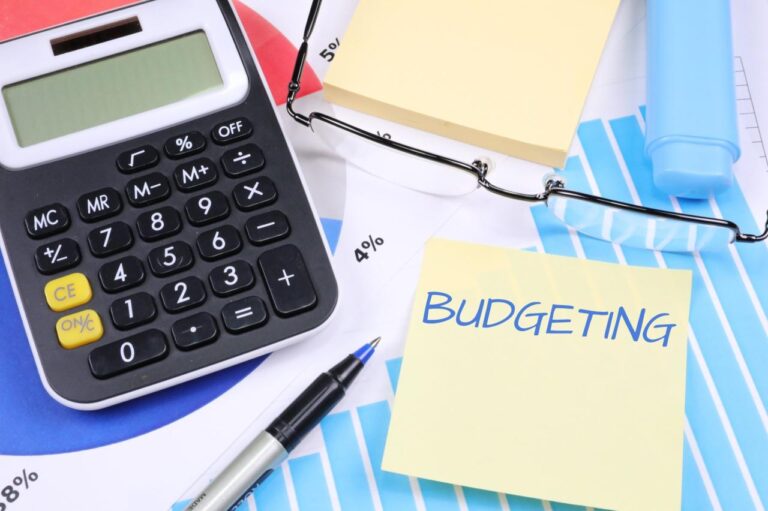In an era of rising costs and economic uncertainty, effective budgeting is no longer just a financial chore; it’s a critical skill for achieving financial stability, reducing stress, and ultimately building wealth. Many people shy away from creating a budget, viewing it as restrictive or complicated. However, a well-crafted budget is, in fact, a powerful tool that offers clarity, control, and the freedom to pursue your financial dreams. This comprehensive guide will unveil savvy budgeting tips, providing you with actionable strategies and insights to not only track your spending but to optimize your financial habits, increase your savings, and confidently navigate your financial journey. Whether you’re a budgeting novice or looking to refine your approach, this article will equip you with the knowledge to truly master your money.
The Power of the Budget

Before diving into the “how-to,” let’s understand the profound benefits of a solid budget. It’s more than just a spreadsheet; it’s a blueprint for your financial life.
A. Gaining Financial Clarity and Control
The primary benefit of budgeting is gaining a clear understanding of your financial situation. Many individuals operate on assumptions about their income and expenses, leading to financial anxiety and missed opportunities.
- See Where Money Goes: A budget illuminates exactly where every dollar is being spent, identifying potential “money leaks” you might not even be aware of.
- Identify Spending Patterns: You’ll notice recurring habits – perhaps too much on dining out, or subscriptions you no longer use.
- Prevent Overspending: By allocating funds to specific categories, you create boundaries and reduce the likelihood of impulsive or excessive spending.
B. Reducing Financial Stress and Anxiety
Money is a leading cause of stress for many. A budget provides a sense of control and predictability, which can significantly alleviate financial worry.
- Avoid Surprises: By planning for expenses, you reduce the shock of unexpected bills.
- Feel Empowered: Knowing you’re actively managing your money fosters a sense of empowerment and reduces feelings of being overwhelmed.
- Achieve Peace of Mind: A clear financial picture allows you to make decisions with confidence, knowing you’re on track.
C. Fueling Your Financial Goals
A budget is the engine that drives your financial aspirations. Whether it’s saving for a down payment, paying off debt, or investing for retirement, a budget makes these goals attainable.
- Prioritize Savings: A budget allows you to intentionally allocate funds towards savings goals, rather than saving whatever is left over (which is often nothing).
- Accelerate Debt Repayment: By identifying areas to cut back, you can free up more money to aggressively pay down high-interest debt.
- Enable Investment: Once savings and debt are managed, your budget helps you allocate consistent funds towards investing, leveraging the power of compounding.
Laying the Foundation
The initial setup of your budget is crucial. It doesn’t have to be complicated, but it does need to be comprehensive.
A. Determine Your Net Income Accurately
Your net income (or take-home pay) is the starting point for any budget. This is the amount you actually receive after taxes, insurance, and retirement contributions are deducted.
- Gather All Income Sources: Include your primary salary, any side hustle income, rental income, benefits, or other regular inflows.
- Calculate Monthly Total: If you’re paid bi-weekly or weekly, multiply accordingly to get your total monthly net income. For variable income, consider using a conservative average or the lowest income month.
B. Track Every Expense
This is the most eye-opening part for many. For at least one full month (ideally two), meticulously track every single dollar you spend. This isn’t about judging your spending, but simply observing it.
- Digital Tools: Use budgeting apps (e.g., YNAB, Mint, Personal Capital), banking apps with spending insights, or spreadsheet templates.
- Manual Tracking: A simple notebook and pen, or a dedicated budgeting journal, can be very effective if you prefer a hands-on approach.
- Categorize Everything: Assign each expense to a specific category (e.g., Groceries, Utilities, Transportation, Dining Out, Entertainment, Subscriptions, Shopping).
C. Differentiating Between Needs and Wants
This distinction is fundamental to effective budgeting.
- Needs: Essential expenses required for survival and basic living. Examples: Housing (rent/mortgage), utilities (electricity, water), basic groceries, necessary transportation, essential insurance, minimum debt payments.
- Wants: Discretionary expenses that improve your quality of life but aren’t strictly necessary. Examples: Dining out, entertainment, vacations, new gadgets, designer clothes, most subscriptions, daily coffee.
- Be Honest: It can be hard to categorize some items, but be realistic about what is truly essential.
D. Choosing a Budgeting Method That Fits Your Style
There’s no one-size-fits-all budget. Experiment with different methods to find what resonates with you.
- The 50/30/20 Rule:
- 50% for Needs: Housing, utilities, essential groceries, transportation, minimum debt payments.
- 30% for Wants: Dining out, entertainment, hobbies, shopping, vacations.
- 20% for Savings & Debt Repayment: Emergency fund, retirement, investments, extra debt payments.
- Pros: Simple, easy to understand.
- Cons: Can be challenging if your needs exceed 50% of your income.
- Zero-Based Budgeting: Every dollar of your income is assigned a “job” – spent, saved, or invested. Your income minus your expenses should equal zero.
- Pros: Maximizes every dollar, fosters intentional spending.
- Cons: Requires more detailed tracking and planning each month.
- Envelope System (Cash Budgeting): Physically allocate cash into envelopes for different spending categories (e.g., “Groceries,” “Entertainment”). Once the cash in an envelope is gone, you can’t spend more in that category until the next budgeting period.
- Pros: Excellent for controlling overspending in specific categories, very tangible.
- Cons: Less convenient in a digital world, not suitable for all expenses (e.g., online bills).
- The “Pay Yourself First” Method: Prioritize savings and investments by automatically transferring funds to these accounts as soon as you get paid, before any other expenses. Whatever is left is for spending.
- Pros: Ensures consistent saving, simpler than detailed tracking for some.
- Cons: Still requires some awareness of remaining spending for necessities.
Savvy Budgeting Tips

Once your budget is set up, the real work begins: optimizing your expenses.
A. Automate Everything Possible
Automation is your best friend in budgeting, especially for savings and bill payments.
- Automate Savings: Set up automatic transfers from your checking account to your savings, investment, and retirement accounts immediately after payday. Treat savings as a non-negotiable bill.
- Automate Bill Payments: Set up auto-pay for utilities, rent/mortgage, loan payments, and subscriptions. This ensures you never miss a payment and avoid late fees.
- “Set It and Forget It”: Once automation is in place, you reduce the mental effort of budgeting and ensure consistency.
B. Cut Unnecessary Expenses Ruthlessly
This is where identifying your “money leaks” comes into play. Go through your spending categories and look for areas to trim.
- Subscriptions Audit: Review all your monthly subscriptions (streaming services, apps, gyms). Cancel anything you don’t actively use or need. Consider rotating services (e.g., one streaming service at a time).
- Dining Out/Coffee: These are often the biggest discretionary spending categories. Reduce frequency, pack lunches, make coffee at home.
- Impulse Buys: Implement a “24-hour rule” – wait 24 hours before making a non-essential purchase.
- Negotiate Bills: Call your internet, cable, or insurance providers periodically to see if you can get a better rate. Mention competitor offers.
- Reduce Transportation Costs: Carpool, use public transport, bike, or walk more. Optimize fuel consumption.
- Energy Efficiency: Reduce utility bills by turning off lights, unplugging electronics, adjusting thermostat, and using energy-efficient appliances.
C. Smart Grocery Shopping and Meal Planning
Food is a significant expense, but smart strategies can lead to substantial savings.
- Meal Plan: Plan your meals for the week before you shop. This reduces waste and impulse buys.
- Make a List and Stick to It: Avoid Browse aisles without a list.
- Cook at Home: Eating out is almost always more expensive than cooking.
- Buy in Bulk (Sensibly): Purchase non-perishables and frequently used items in bulk if it makes financial sense and you have storage.
- Shop Sales and Use Coupons: Take advantage of discounts and loyalty programs.
- Reduce Food Waste: Use leftovers, freeze excess portions, and be mindful of expiration dates.
D. The “Sinking Fund” Strategy
A sinking fund is a powerful concept for saving for irregular, but anticipated, expenses (e.g., car maintenance, holiday gifts, annual insurance premiums, vacation, home repairs). Instead of being hit with a large bill unexpectedly, you save a small amount regularly.
- Identify Irregular Expenses: List all expenses that aren’t monthly but you know will occur.
- Calculate Monthly Contribution: Divide the total estimated annual cost by 12 to determine how much to save each month for that specific fund.
- Separate Accounts (Optional): You can create separate digital “envelopes” or sub-accounts within your savings account for each sinking fund.
Advanced Budgeting Strategies for Optimization
Once you’ve mastered the basics, consider these techniques to further refine your budget and accelerate your financial goals.
A. The Anti-Budgeting Approach
If traditional budgeting feels too restrictive, the “anti-budget” might work. This is essentially the “Pay Yourself First” method taken to its extreme.
- Automate Savings Heavily: Immediately transfer a significant percentage (e.g., 20-50%) of your income to savings/investments.
- Spend What’s Left: After automation, you can spend the remainder freely without detailed tracking, knowing your financial goals are being met first.
- Caveat: Requires strong discipline with automated savings and a good understanding of your fixed expenses. Not suitable if you struggle with overspending.
B. The Zero-Based Budget
As mentioned earlier, a zero-based budget gives every dollar a job. This is for those who want maximum control and accountability.
- Assign Every Dollar: At the beginning of each month, allocate every dollar of your expected income to a specific category.
- Iterative Process: It might take a few months to get this right, as you learn your actual spending patterns.
- Review and Adjust: Check in frequently (daily or weekly) to ensure you’re staying on track and adjust categories as needed.
C. Leveraging Technology
Modern technology can make budgeting much easier and more insightful.
- YNAB (You Need A Budget): A highly-regarded app based on the zero-based budgeting philosophy, focusing on giving every dollar a job. Excellent for intentional spending.
- Mint: A free app that links to your bank accounts and credit cards, categorizes transactions, and helps you track spending.
- Personal Capital: Offers robust financial tracking, investment analysis, and basic budgeting features, especially useful for those with investments.
- Spreadsheets (Google Sheets/Excel): Highly customizable for those who prefer a hands-on, detailed approach. Many free templates are available online.
D. Reviewing Your Budget Regularly
A budget is a living document, not a rigid set of rules. Regular review is crucial.
- Monthly Check-ins: Dedicate 15-30 minutes each month to review your spending, assess progress toward goals, and make adjustments.
- Quarterly Deep Dives: Every few months, take a more extensive look at your larger expenses and long-term goals.
- Avoid Self-Blame: If you overspent in a category, don’t beat yourself up. Learn from it, adjust the budget for the next period, and move on. The goal is progress, not perfection.
Budgeting for Specific Financial Goals
Your budget isn’t just about managing daily expenses; it’s about making specific financial dreams a reality.
A. Accelerating Debt Repayment
Your budget is your most powerful tool for becoming debt-free.
- Find Extra Funds: Use your budget to identify areas where you can cut back to free up more money for debt payments.
- Allocate Windfalls: Use bonuses, tax refunds, or unexpected income directly towards debt.
- Avoid New Debt: Revisit your spending habits to ensure you’re not accumulating new debt while trying to pay off old debt.
B. Boosting Your Savings Rate
A higher savings rate means you reach your financial goals faster.
- Challenge Yourself: Can you increase your savings rate by an extra 1% or 2% each month? Even small increases compound over time.
- Save for Specific Goals: Create dedicated savings goals within your budget for a down payment, a new car, a vacation, or a large purchase.
- Automate, Automate, Automate: This remains the most effective way to ensure consistent saving.
C. Investing for Future Wealth
Once your emergency fund is solid and high-interest debt is managed, your budget should prioritize investing.
- Treat Investments as a Bill: Just like rent or utilities, make investment contributions a non-negotiable line item in your budget.
- Maximize Retirement Accounts: Leverage tax-advantaged accounts like 401(k)s and IRAs, ensuring your budget allows for maximum contributions.
- Dollar-Cost Averaging: Your consistent budgeted contributions enable dollar-cost averaging, reducing risk over time.
Overcoming Common Budgeting Challenges
Budgeting can be tricky. Here are solutions to common roadblocks.
A. Variable Income
If your income fluctuates (e.g., freelance, sales commissions), budgeting requires a slightly different approach.
- Budget for Your Lowest Income: Base your budget on your lowest expected monthly income.
- Categorize Excess Income: When you have a higher-income month, allocate the extra funds strategically:
- Boost emergency fund.
- Pay down debt.
- Increase savings/investments.
- Fund sinking funds for future larger expenses.
- Create a “Buffer” Account: Keep an extra month’s worth of expenses in a separate account to smooth out lean months.
B. Unexpected Expenses
Even with an emergency fund and sinking funds, true “unexpected” expenses can pop up.
- Flexibility in Your Budget: Don’t make your budget so rigid that it breaks with a minor hiccup. Have a small “miscellaneous” or “buffer” category.
- Reallocate Funds: If an unexpected expense arises, adjust other discretionary categories for that month to cover it, rather than going off-budget entirely.
C. Losing Motivation
Budgeting can feel like a grind. Keep yourself motivated.
- Track Progress Visually: Use charts or graphs to see your debt decreasing or savings increasing.
- Celebrate Small Wins: Acknowledge milestones (e.g., first $1,000 saved, one debt paid off).
- Find an Accountability Partner: Share your goals with a trusted friend or family member.
- Focus on Your “Why”: Remind yourself of the freedom and goals your budget is helping you achieve.
Conclusion
Budgeting is far more than just tracking numbers; it’s a powerful act of intentionality that puts you firmly in control of your financial destiny. By accurately assessing your income, diligently tracking your expenses, making informed choices about needs versus wants, leveraging smart tools and methods, and consistently reviewing your progress, you can transform your relationship with money. Embrace these savvy budgeting tips, and unveil your personal pathway to financial mastery, reduced stress, and the realization of your most ambitious financial goals. The power to shape your financial future is in your hands – start budgeting wisely today.



